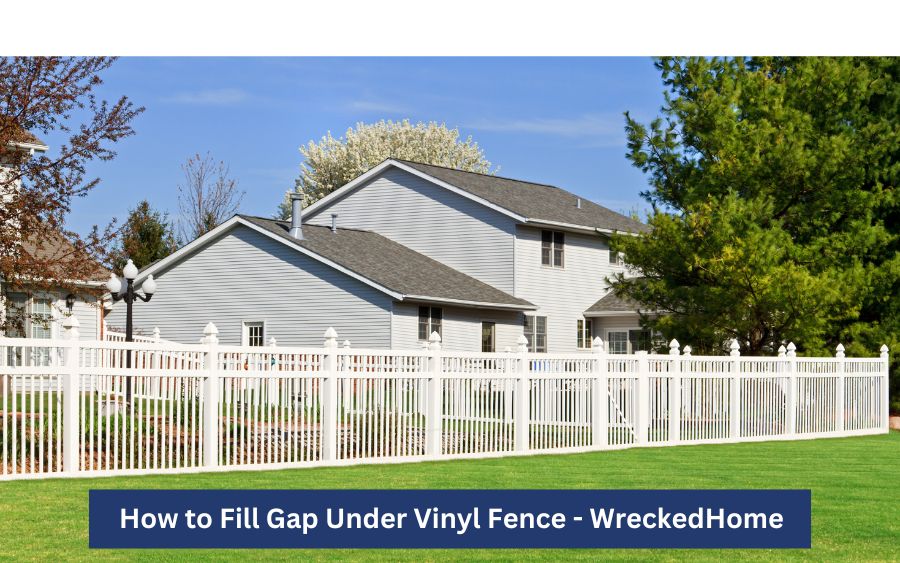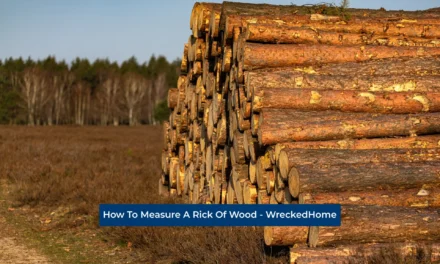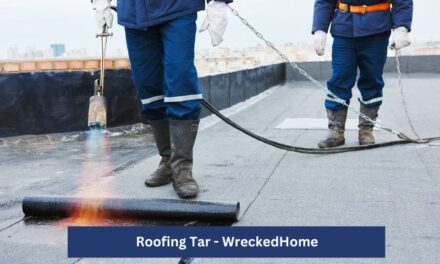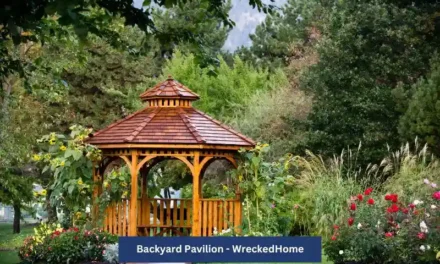Closing the Gap: 7 Effective Methods to Fill the Space Under your Vinyl Fence
Vinyl fences are known and popular among homeowners due to their durability, low maintenance, and aesthetic appeal. However, there is a common issue that vinyl fence owners’ face: The presence of gaps underneath their fences. Let’s see how to fill gap under vinyl fence.
There are various factors that are responsible for these gaps such as the natural ground settling, poor installation, or climate-related factors. While they may seem inconsequential at first, these gaps can lead to a range of problems, including weed growth, pest intrusion, and drainage issues.
Therefore it’s necessary to have a solution for learning how to fill gap under vinyl fence. We prepared a guide for anyone who is looking for how to fill gap under vinyl fence?
In this comprehensive guide, we will discuss reasons for gaps and delve into the various methods you can use to fill the gap under your vinyl fence. So don’t worry! Now you can fix your gap under your vinyl fence easily. Just read this and implement the methods to solve the issue properly.
- Closing the Gap: 7 Effective Methods to Fill the Space Under your Vinyl Fence
- Understanding the Gap
- Reasons for Gap Formation
- Problems Associated with Gaps
- Common methods on how to fill gap under vinyl fence
- Method 1: Back filling with Soil
- Method 2: Gravel or Stone Fill
- Method 3: Concrete Footer
- Method 4: Landscape Fabric and Mulch
- Method 5: Vinyl Skirting Panels
- Method 6: Wooden or Vinyl Lattice
- Method 7: Gabion Baskets
- Conclusion
Understanding the Gap
Are you looking for the best way to learn how to fill gap under vinyl fence? We will show you. Before we dive into the solutions, it’s necessary to know the root cause of why gaps form under vinyl fences. When you’re referring to a “gap under a vinyl fence,” you’re likely talking about the space between the bottom of the fence panels and the ground. So let’s get to know the main reasons and solutions for how to fill gap under vinyl fence.
Reasons for Gap Formation
- Natural Ground Settling: Over time, the ground beneath your fence may settle, creating a large hollow space between the ground which forms a gap between the bottom of the fence and the earth. The main cause behind settling is erosion, soil compaction, or other geological factors.
- Fence Installation Issues: Gaps under vinyl fences can result from improper installation techniques, such as failing to dig the post holes deep enough or not securing the fence properly. Due to this improper installation, the result is an uneven fence line.
- Climate-Related Factors: Sometimes the reason can be weather conditions such as freeze-thaw cycles. Due to this, the soil expands and contracts, which potentially creates gaps under the fence.
Problems Associated with Gaps
The created gap not only causes damage abruptly but this can be a source of some problems. Therefore the timely solution is necessary. These are common problems
- Pest Intrusion: Small animals, including rodents and insects, find an easy way to enter these gaps. They enter and potentially cause damage to your garden or property.
- Weeds and Vegetation Growth: Gaps under the ground lead to weeds and vegetation growth. This can not only be unsightly but also makes maintenance difficult.
- Erosion and Drainage Issues: Poor drainage, caused by gaps leads to water pooling around the fence’s base. This makes the floor condition worse and compromises its stability.
Common methods on how to fill gap under vinyl fence
Its essential to know the ways for filling gap to save your property. The major thing is to implement the ways by following instructions and safety measures. There are 7 common methods that detail how to fill gaps under vinyl fences
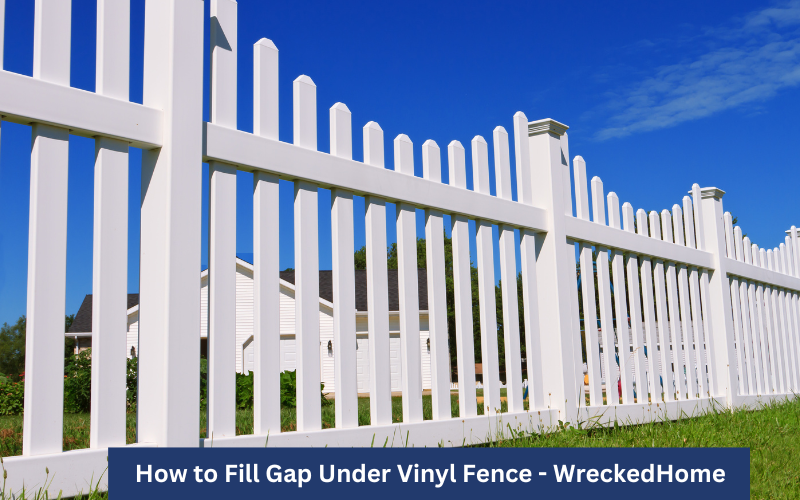
Method 1: Back filling with Soil
One of the ways to fill gap is Back filling with soil. It is a straightforward and cost-effective method to close the gap under your vinyl fence. This is also a low cost method.
Visit our store for 10% off our Tools here.
How to Back fill with Soil:
To do back filling follow these steps
- First dig out the soil beneath the vinyl fence gap that create enough space for the back fill.
- Now add soil material, that’s compact and make it a smooth surface.
- Tamp soil a few times and make it stable.
Pros:
- Soil back filling is cost-effective
- Easy and hassle free.
- Good for small gaps and settling issues.
Cons
- It requires periodic maintenance as the soil settles over time.
Tips for Effective Soil Back filling:
- For long term quality use a mixture of soil and compost.
- Compact the soil in layers to reduce settling efforts.
Method 2: Gravel or Stone Fill
Another popular method is use of gravel or stones to fill the gap under your vinyl fence. It is a recommended method for addressing drainage issues.
How to Use Gravel or Stones:
The proper way to use this gravel method is
- Clear debris from the underneath the gap area.
- Add gravel or stones, to fill gap by ensuring it’s level with the bottom of the fence.
- Compact the material for longevity and stability.
Pros
- It provides excellent drainage
- Requires minimal maintenance.
Cons
- Stones may shift over time.
- Cracks can appear after time.
Selecting the Right Type of Gravel or Stones
- Use crushed rock or pea gravel for stability and drainage control.
- For a more aesthetically pleasing finish consider decorative stones.
Method 3: Concrete Footer
A concrete footer is strong enough that by adding under your vinyl fence it offers exceptional stability and durability.
How to Create a Concrete Footer:
To add Concrete footer that fills gaps properly
- First beneath the gap dig a trench and install wooden forms to shape the footer.
- Now add mixed concrete in the trench and make sure it’s level and smooth.
- Leave it for a few hours, it will strengthen.
Pros
- Best for erosion issues
- Offers extra stability
Cons
- Requires long time for stability
Tips for a Successful Concrete Footer Installation:
- Use reinforcing mesh or rebar that adds extra strength.
- To keep concrete moist ensure proper curing.
Method 4: Landscape Fabric and Mulch
Landscape fabric and mulch can be a good method to cover the gap under your vinyl fence. The best feature of this is that it prevents weed growth.
Using Landscape Fabric and Mulch: how to fill gap under vinyl fence
When there is weed growth then landscape fabric and mulch is a good way to fill gaps by
- First placing the landscape fabric over the gap then extend it a few inches beyond the fence line.
- Now apply a layer of mulch over the fabric, and make the level stable.
Pros:
- This method offers weed control.
- It requires minimal maintenance.
- Enhances the appearance of your landscape.
Cons
- Over time, mulch may decompose.
- It also needs replenishing.
Selecting Suitable Mulch
- Must consider Organic mulches, such as wood chips or bark, are popular choices.
- Pay attention to the color of mulch. Choose mulch colors that complement your landscape design.
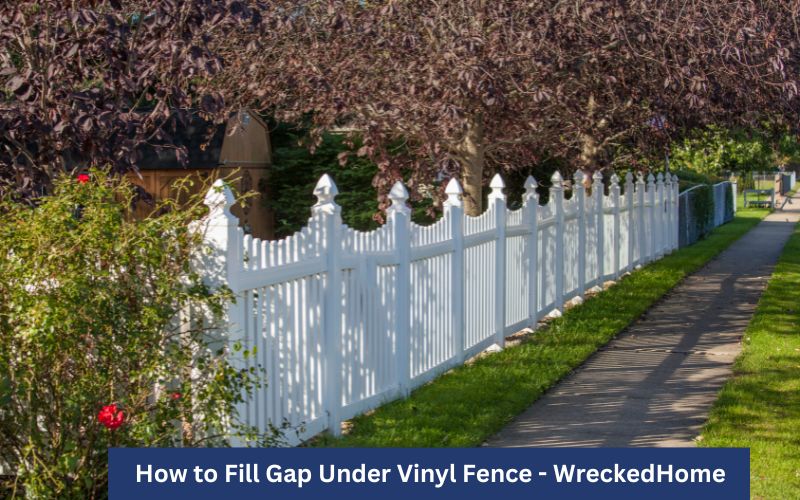
Method 5: Vinyl Skirting Panels
To get the clean and attractive finish by filling gaps, Vinyl skirting panels are a special method.
How to Install Vinyl Skirting Panels: how to fill gap under vinyl fence
This special method can used by doing the following:
- Must measure the length of the gap then cut the panels accordingly.
- Now secure the panels to the fence posts by using screws or clips.
Pros
- Vinyl panels give a seamless and aesthetically pleasing solution.
- They are durable and long lasting.
- It require minimal maintenance.
Cons
- You must need extra care
- It requires tools to prevent sagging or gaps
Method 6: Wooden or Vinyl Lattice
Another appealing and aesthetic solution to fill the gap is Wooden or vinyl lattice. This is well known for firm grips.
Using Wooden or Vinyl Lattice: how to fill gap under vinyl fence
To use this method follow these steps:
- To Measure the gap use measuring tape then cut the lattice panels that fit in the gap.
- Then attach the panels to the fence posts or the ground, and ensure best fitting.
Pros
- Lattice provides visual appeal
- It can be customized easily
- It offers some level of privacy
- It also allows airflow.
Cons
- It requires a circular saw or jigsaw for precise cuts.
Tips for Cutting and Securing Lattice Panels:
- For precise cuts use a circular saw or jigsaw.
- To prevent warping or sagging secure the panels firmly.
Method 7: Gabion Baskets
Gabion baskets are metal wire containers that are filled with rocks to fill in the gap. This is an eco-friendly way to fill gaps but require heavy lifting and safety gear for proper installation.
Using Gabion Baskets: how to fill gap under vinyl fence
To use gabion baskets as an environmentally friendly option to learn how to fill gap under vinyl fence with these steps
- Follow manufacturer’s instructions to assemble the gabion baskets.
- Fill the baskets with rocks or stone mixture.
- Now position the filled baskets under the gap in the fence.
- Make sure the baskets are level and securely anchored.
Pros
- It looks natural and is a visually pleasing element for your landscape.
- With an eco-friendly feature, it helps to control erosion.
Cons
- It requires physical labor
- Requires gloves and eye protection safety concerns.
Tips for Filling and Securing Gabion Baskets:
- Requires safety concern. Wear gloves and eye protection when handling rocks.
- Make sure the baskets are securely linked to prevent shifting.
Tips for Maintenance for how to fill gap under vinyl fence:
Care and maintenance are an essential part to save cost and for longevity. To fill the gaps and maintain long lasting results follow these tips.
- Regularly inspect the gap area to find out signs of settling, erosion, or damage.
- Address any issues promptly to avoid further damage that ruin property.
- Replenish mulch or rescuer lattice panels as needed to secure property.
- Consider applying sealants or coatings to protect certain materials such as concrete or wood.
Conclusion
In conclusion, it’s essential for your property durability and aesthetic nature to address the gap filler and how to fill gap under vinyl fence. It is budget friendly to fill the gap without worrying whether you opt for a simple DIY solution like back filling with soil or a more consuming approach like pouring a concrete slab. You can choose the respective method that fits your requirements and budget.
By understanding the reason for gap formation, pros and cons of each method, you can make an informed decision. Make sure you use a vinyl fence gap filling method that is reliable and an attractive part of your landscape for years to come.
Keep in mind it’s necessary so don’t let those gaps go unaddressed – take action today to enjoy a well-maintained vinyl fence for tomorrow.
For any repairs, installations, builds, or questions; We recommend you to hire a professional. Find A Pro Near You Here!

